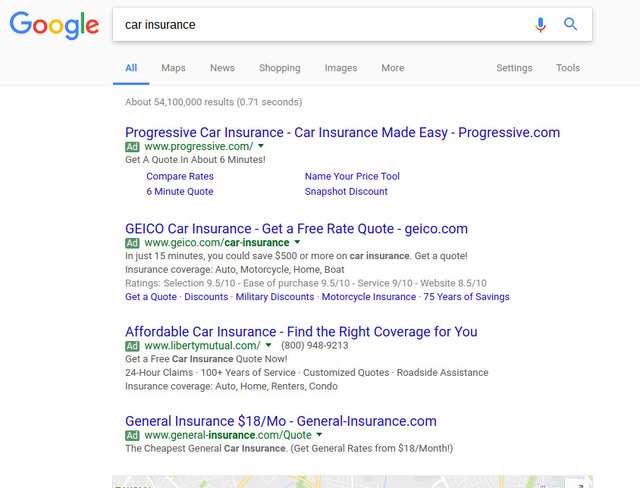As the micro-moment takes center stage in modern marketing, brands can no longer ignore the value of hybrid marketing and finding ways to elevate SEO within their organizations.
A recent survey by the Content Marketing Institute found that 89 percent of B2B marketers and 86 percent of B2C marketers say that they use content marketing to promote their brands. More than 70 percent of marketers in both groups also say that they plan to produce more content in 2017 than they did in 2016.
The competition within the digital space is about to become even more stiff, forcing brands to pay attention to how they can improve the effectiveness and efficiency of their marketing programs. Content is only useful to an organization if it provides value for the right users and if it is optimized correctly so that it can be found.
Note that over 60 percent of the traffic on most sites arrives from the search engines. Fifty one percent of that traffic arrives through organic clicks, and another 10 percent comes from paid search. Since these two drivers work together for such a large percentage of site traffic, all marketers should consider the value of hybrid marketing or integrated search marketing and how they can be optimized to maximize the opportunity.
Why paid search still matters
Not only does paid search play an important existing role in how much traffic arrives on your site, but Google has also been showing signs that ads will be even more prominent moving forward. In early 2016, the search engine eliminated the ads that once appeared along the sides of the SERPs and increased the number of slots available above the organic results for certain queries.
Our latest research indicates that as many as 23 percent of all searches have 4 spaces available for ads, and queries that contain purchase intent are 6x as likely to have all 4 spaces available. When users land on a page with 4 paid results, the ads often push the organic results below the fold, limiting their visibility and impact.

Google has introduced a paid search result into the local 3-packs that appear for local search. This means paid results will also have a greater impact on local search strategy and how brick-and-mortar businesses attract their customers online, forcing hybrid marketing to the forefront.
The customer journey in 2017
Modern consumer behavior has shattered the customer journey. It is no longer a linear path. Instead, it has fragmented into countless micro-touch points that Google refers to as micro-moments. These micro-moments have been divided into four main categories:
- The I-want-to-go moment
- The I-want-to-buy moment
- The I-want-to-know moment
- The I-want-to-do moment
These micro moments can occur in any order throughout the buyer’s journey. They all present opportunities for organizations to build relationships with the prospects and encourage them to enter the sales funnel so that they can become leads and then customers.
Google works to understand these micro-moments and provide SERPs that address the intention of the user. That is why certain SERPs return results that heavily feature different types of content, such as videos images, textual content, or paid advertisements. The better that brands are able to understand the intentions of their users and how Google thus responds to a particular query, the easier it will be to use hybrid marketing and produce the right content to be optimized for that particular prospect’s micro-moment.
Remember also that customers today are largely channel agnostic. They interact with brands on multiple devices and on a variety of different platforms. They expect their desired brands to answer their needs on all of these different channels. When brands create hybrid marketing campaigns, they are able to effectively develop content that addresses the needs of the modern consumer across micro-moments and regardless of device.
Elevating the importance SEO and hybrid marketing in your organization
To build this type of mature, effective hybrid marketing program at your organization, you will need to increase the prevalence of SEO in marketing and evangelize its importance to people throughout the business, particularly decision makers in the C-suite or the board room. Promoting SEO throughout your organization, however, requires having the manpower to complete the task correctly. You want to invest in your personnel and find high-quality employees who understand the importance of hybrid marketing and have the insights needed to stretch across specialty lines.
This will allow your team to better visualize cross-channel campaigns and create them more effectively. Internally, you also want to take the time to invest in the training for your existing employees. Offer workshops, meetings, and training sessions to help ensure that everyone begins to gain a more diverse understanding of online marketing and their role within the larger picture.
As you create these campaigns, you will then need to use analytics to monitor your progress. Make sure you have a complete vision of the success of your campaigns. Watch SEO-specific metrics, such as keyword rankings and site engagement as well as the metrics that reveal the impact on the larger organization, including revenue and conversions.
As you then prepare to speak with your organizational leaders, remember their priorities. They prefer to hear about how the hybrid marketing campaigns you run impact the business rather than keyword positions. Be able to explain how your efforts have positively impacted the share of voice of your organization, revenue, and how you perform compared to key competitors. Building a strong case for the importance of your role with these leaders will help you secure the buy-in you need to further promote your brand.
These resources will allow you to further mature your optimization strategy, nurture hybrid marketing efforts, and thus digitally build your brand. We are seeing the industry mature across the spectrum as marketers, technology, and consumers become more sophisticated in how they interact with each other and their expectations.
For brands to succeed on the modern competitive landscape, they need to have a keen understanding of the direction of digital hybrid marketing and how they can incorporate the micro-moment into their strategy while elevating SEO at their organization to secure the buy-in they need. Online marketing and optimization has the potential be a tremendous powerhouse for brands who use it correctly, and brands planning their 2017 strategy need to pay attention.


